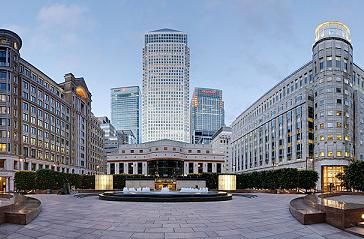Canary Wharf launches solar power bus shelter
A new bus shelter with a transparent solar photovoltaic layer has been introduced in the Canary Wharf business district in London

A new bus shelter with a transparent solar photovoltaic layer has been introduced in the Canary Wharf business district in London.
The bus shelter was designed and developed by UK-based company Polysolar in partnership with street furniture supplier Marshalls.
In a statement, Marshalls said: “This installation will also constitute an upgrade in capacity and aesthetics over the previous bus shelter, retaining the weather-proofing and structural elements of standard architectural glazing.”
Polysolar’s transparent BIPV layer enables full PV building integration of façades to windows.
Marshalls said: “The concept of discretely embedding solar technology into the fabric of structures and buildings represents a convenient and attractive means of reducing London’s carbon footprint. The Solar Bus Shelter is capable of generating more than 2000 kWhours per year, enough electricity to power the average London home – so adoption of this exciting technology can make a significant contribution to London’s sustainable future.”
Polysolar said a major advantage of BIPV comes from the cost of installation being offset by the production of renewable energy.
The project was commissioned by Canary Wharf Group after Polysolar emerged last year as one of the winners in the property giant’s Cognicity Challenge smart cities competition.
Hamish Watson, founder and CEO of Polysolar, said: “The solar bus shelter provides not just demonstration of the functionality, performance and aesthetics of our PV glass but represents an important application innovation… Using our solar PV glazing across London’s transport sector, in things like bus shelters, EV charging canopies, walkways and bike parks, could have a significant impact on the city’s emissions, without compromising its environment, architecture or budgets.”
Polysolar said it was continuing to work with Canary Wharf and hoped to incorporate its solar cells into the facades of offices and residential developments on the site.
Polysolar chief technology officer Joanna Slota-Newson said building integrated solar technologies have the potential to make solar power cost competitive, with deployments removing the need for alternative building materials.
Ms Slota-Newson added: “Key requirements to enable wider adoption of solar energy are value for money without subsidy, and attractive architectural aesthetics… Our transparent solar glass meets both these needs through multi-functionality: the solar panel becomes part of the structure itself, looks great and also generates energy efficiently.”

_400_250_80_s_c1.jpg)


_400_250_s_c1.png)

